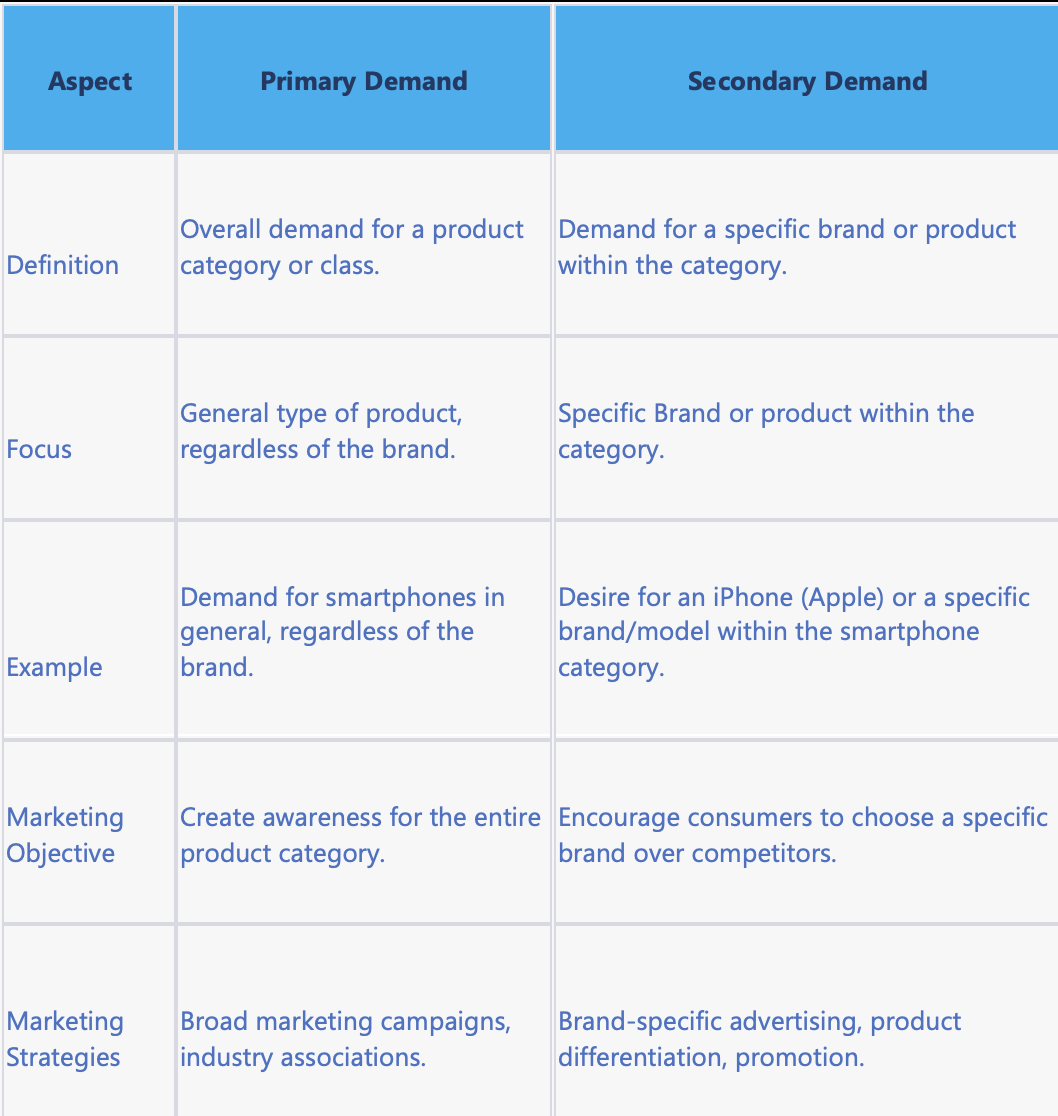Primary Demand And Secondary Demand
Primary demand and secondary demand are marketing words that describe various aspects of consumer demand for goods or services. They are frequently utilised in product marketing and branding techniques. Each term is defined as follows:
Primary Demand
Primary demand is the general demand for a product category or class of products, rather than a specific brand or product within that category. It expresses the want and demand for a generic sort of product, regardless of brand.
For example, the primary demand for smartphones includes the overall need for mobile phones with varied capabilities, regardless of whether it’s an iPhone, Samsung, or any other specific brand.
Secondary demand
Secondary demand, on the other hand, is the demand for a certain brand or product within a product category.
It displays the consumer’s preference for one brand above another in the same product category. In the case of smartphones, secondary demand would be a desire for an iPhone, a Samsung Galaxy, or a specific brand/model within the broader category of smartphones.
Difference Between Primary and Secondary Demand
The difference between primary demand and secondary demand is given in the table below:

Companies frequently seek to increase both primary and secondary demand through marketing. They want to raise awareness and interest in the product category as a whole (primary demand), as well as encourage consumers to select their specific brand or product (secondary demand). This is accomplished through a variety of marketing methods, including advertising, branding, product differentiation, and promotion, all of which try to position their brand favourably within the larger product category and improve consumer preference.
